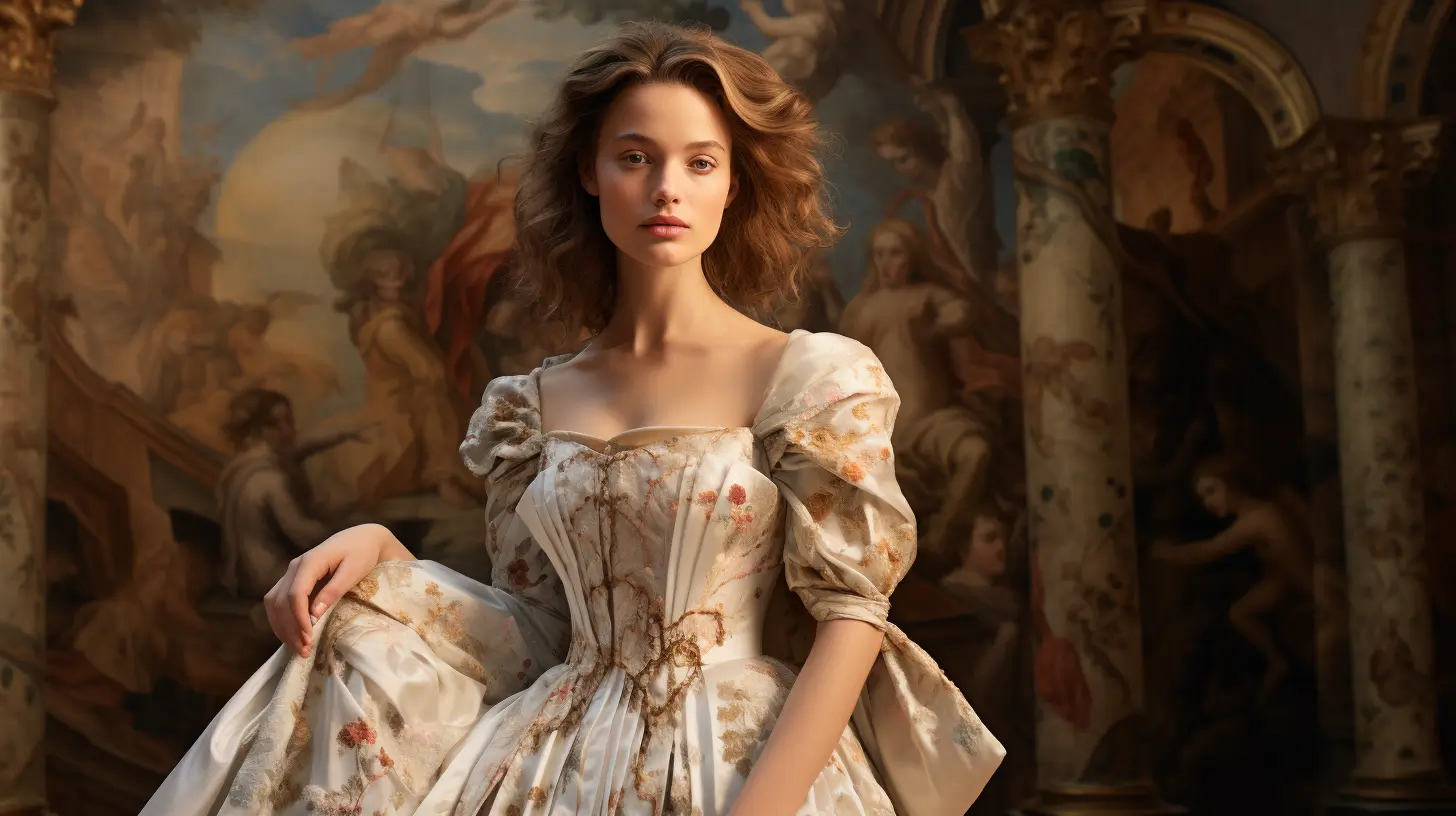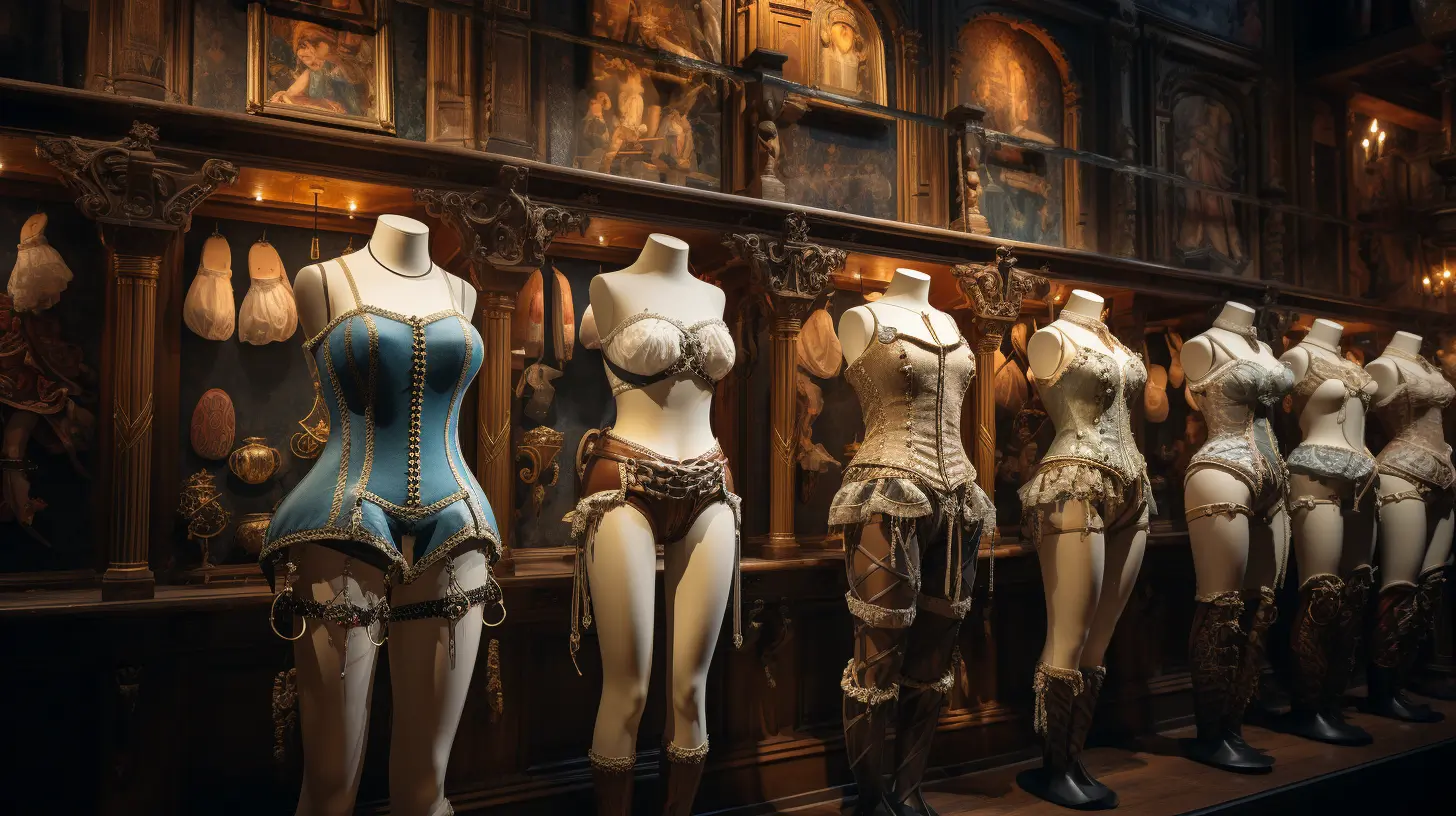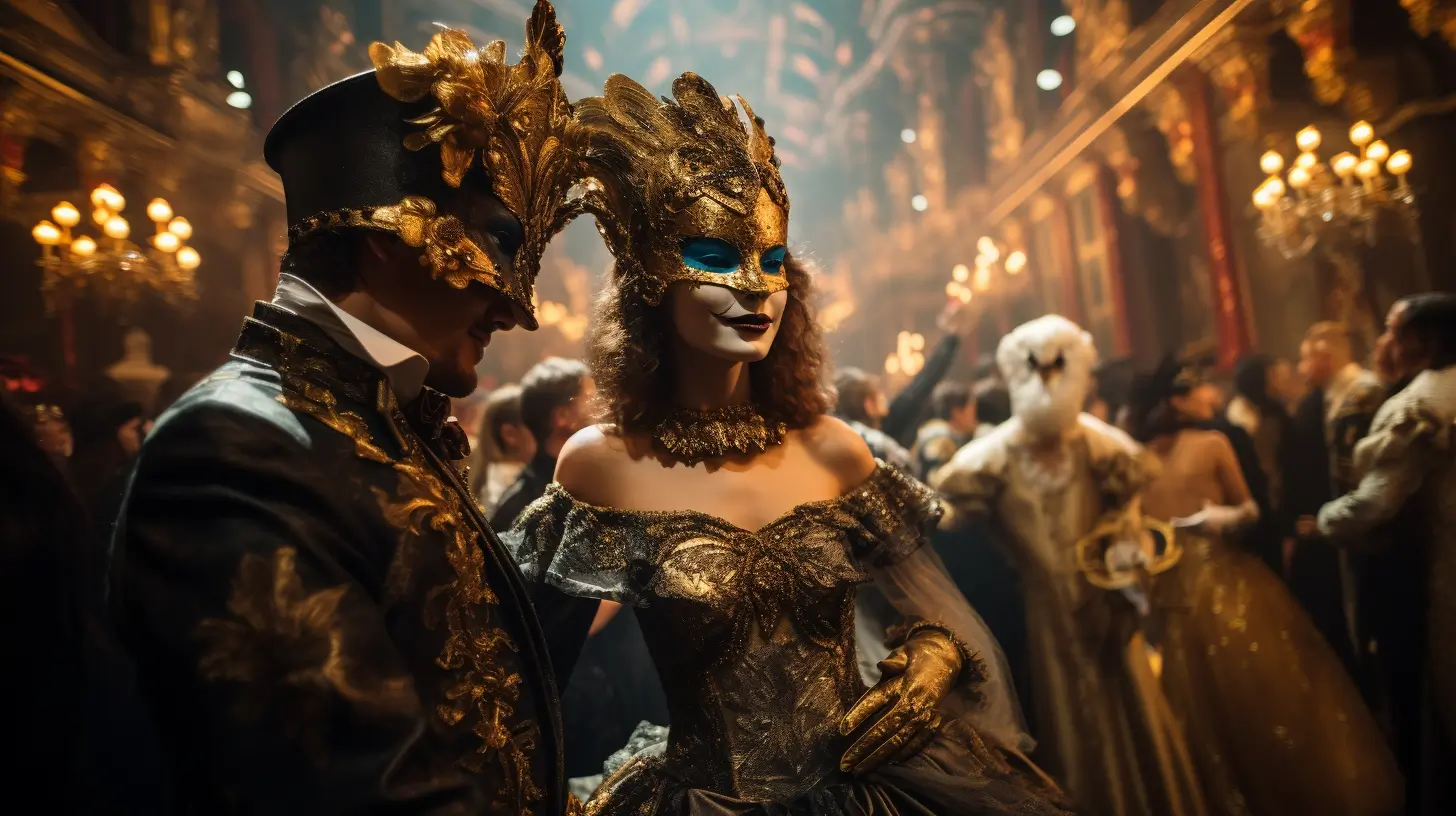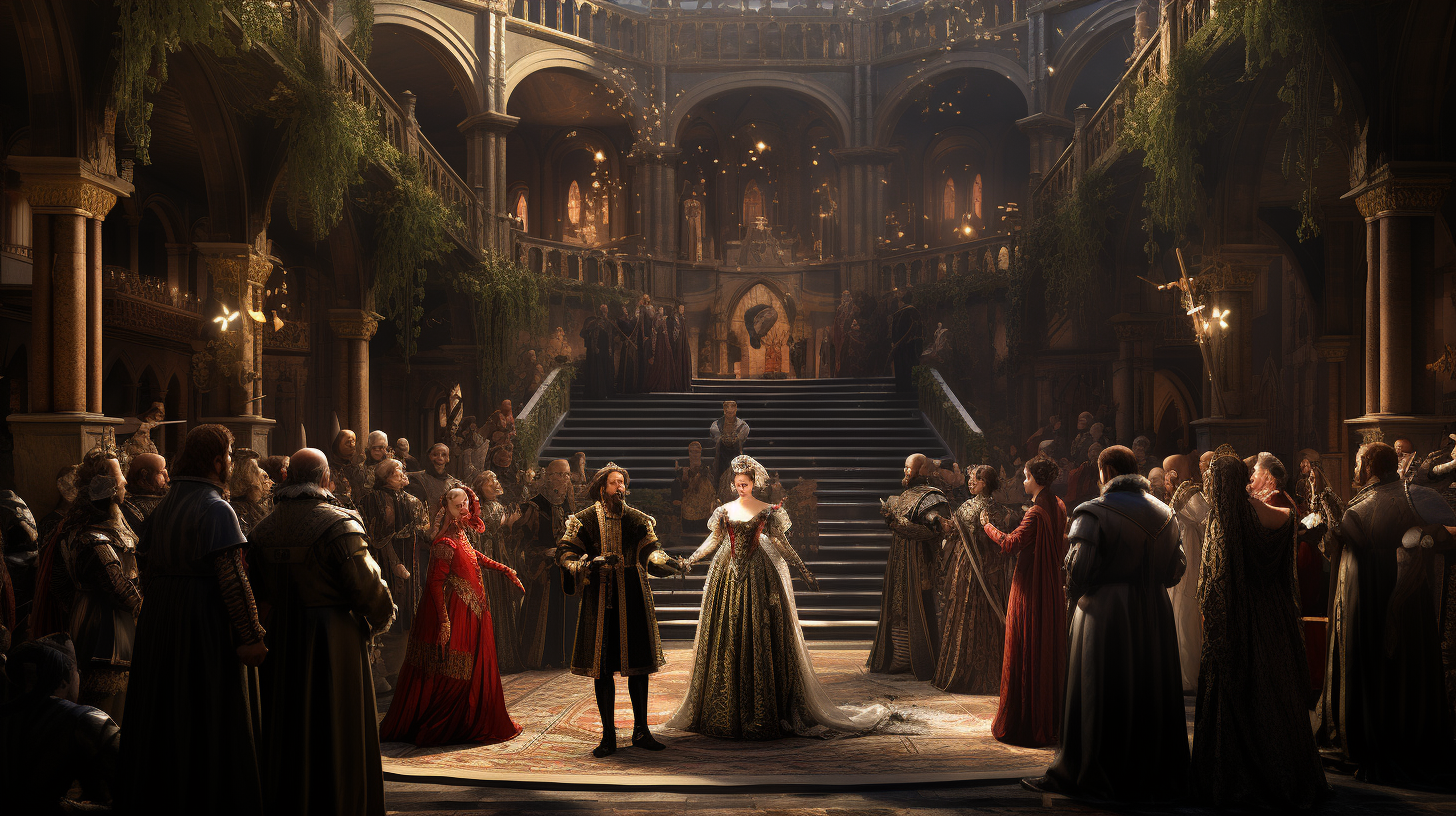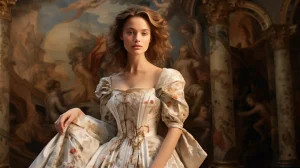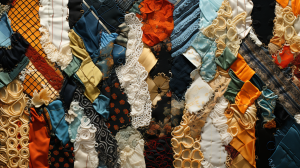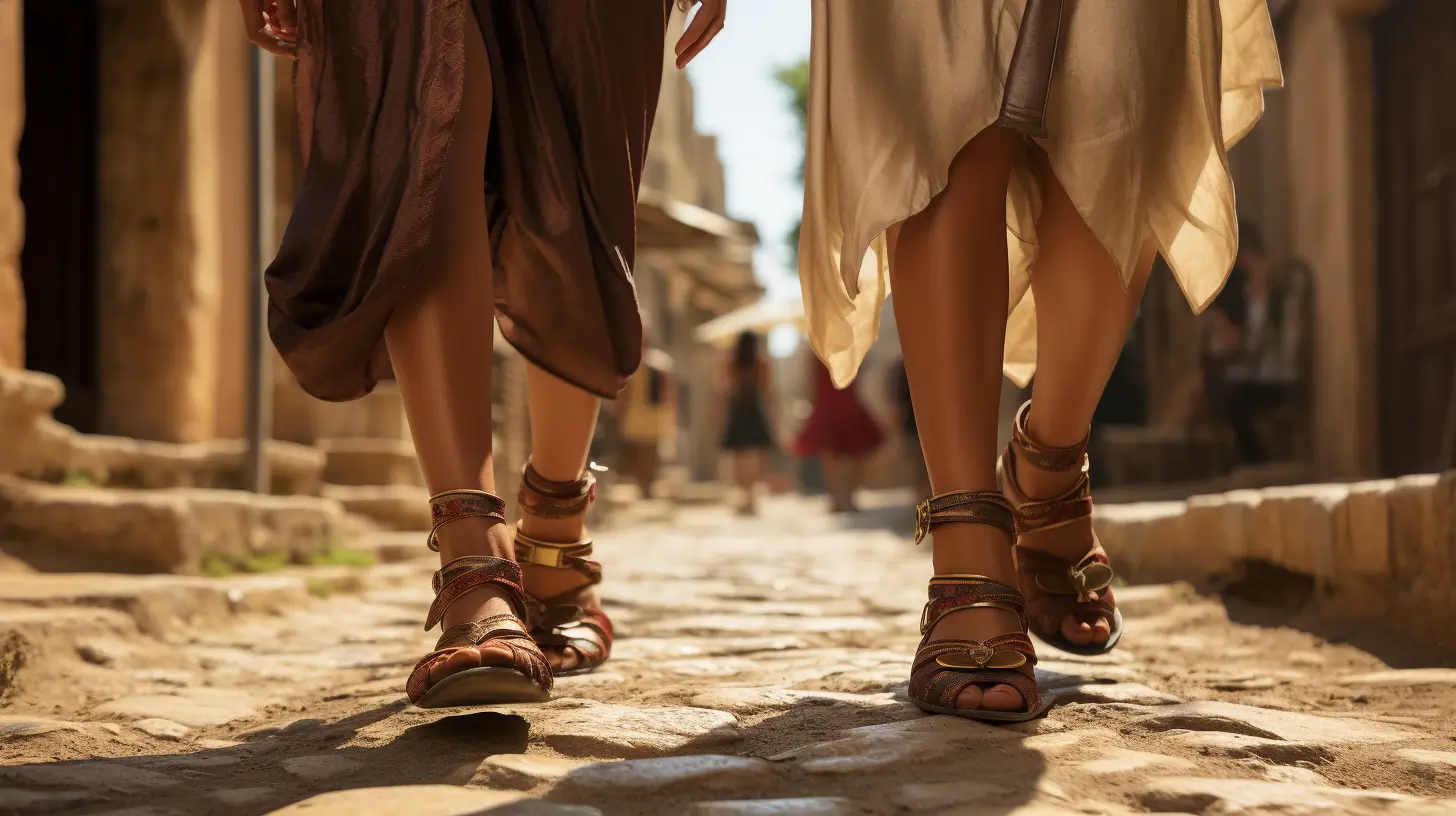
Stepping into the Past: The Intrigue of Renaissance Footwear
👞 Ah, the Renaissance, that magical period where the arts and sciences flourished like a finely stitched tapestry. Imagine walking through the streets of Florence or Venice, the air rife with intellectual fervor and artistic mastery. Now, let your gaze drift downwards—yes, right there—to the ground, where under extravagant gowns and tailored coats you’ll find a lesser-known but equally fascinating world of Renaissance Footwear. 🥿
Step with me into this extraordinary epoch, where shoes were more than mere coverings for feet; they were works of art, symbols of status, and reflections of societal values. We often overlook the impact of footwear in history, preoccupied with the grandeur of paintings and sculptures. Yet, as we shall uncover, the tale of shoes from the Renaissance era is a captivating story that lends deep insights into the culture and customs of the time.
You see, each stitch and buckle, the choice of material, and even the height of the heel spoke volumes about the individual wearing them. Footwear could reveal a person’s social standing, their profession, and at times, even their moral character. This wasn’t merely a period of cultural and artistic revival; it was an era where even the most mundane aspects of daily life, like shoes, were infused with significance.
A talented artist could weave magic into the very fabric of these shoes, making them not just functional but also beautiful. The tale we are about to unravel is not simply about leather and stitches; it’s about how each pair of shoes was a canvas upon which the zeitgeist of the Renaissance was painted.
🎨 Image Description: A photorealistic painting capturing a cobbled street of a Renaissance town. Men and women in period attire walk along, their clothes reflecting a rich tapestry of social standing. But the focus is on their feet, adorned in a variety of intricate shoes, from elegant heels to sturdy leather boots. Each pair is unique, capturing the essence of its wearer, mirroring the vibrant energy of the era.
This is where we set the stage, my friends. Up next, we’ll be exploring the historical context that gave birth to Renaissance Footwear. Stay tuned as we wander through the byways of time, unraveling the allure of Renaissance shoes, one step at a time. ✨
The Cradle of Elegance: The Birth of Renaissance Footwear
Ah, the birth of Renaissance Footwear—it’s like the first verse of a song that sets the stage for a symphony of stories and cultural artifacts. You see, before we meander further into the design and craftsmanship that shaped these artistic feats, we must first understand the historical clay from which they were molded.
Setting the Scene
Picture yourself in a world teetering between the Middle Ages and modernity, a bridge connecting feudalism to a newfound freedom of thought. While the Renaissance may be renowned for its towering intellects like Leonardo da Vinci and Michelangelo, it also saw the birth of a new fashion consciousness. Shoes, which had once been mere protectors of feet, began a transformation into statements of social standing and individual expression.
🎨 Image Placeholder: A photorealistic depiction of a street scene from Renaissance Florence. Amidst the magnificent buildings and vibrant marketplace, pay attention to the footfall—the array of shoes adorned by people of varying statuses, from the simpler shoes of the working class to the ornamented footwear of the elite.
Evolution from Function to Fashion
The seed of fashion was sown into footwear largely due to the societal changes of the time. Previously, shoes had been functional, designed to shield feet from rough terrains and harsh conditions. However, the period saw a proliferation of trade, the introduction of new materials, and an infusion of cultural influences, turning shoes into canvases of artistic expression and societal stratification.
The Role of Social Hierarchy
And, my friends, let’s not forget how footwear became a marker of one’s place in the grand mosaic of Renaissance society. Nobles and affluent merchants began to differentiate themselves with unique styles and materials that were out of reach for commoners. Thus, shoes went from being mere foot coverings to objects that you could read like a book—each layer, each stitch revealing a story about its wearer.
An Age of Extravagance
Ah, it was an era that reveled in opulence, where the artistic grandeur mirrored the embellishments woven into everyday life, including the shoes. Kings and queens, nobles and artists—they all indulged in the luxury that defined the time, and their footwear was no exception.
Sumptuary Laws and Their Influence
Now, one cannot mention Renaissance fashion without touching upon sumptuary laws, rules designed to restrict extravagance in attire. It’s like a societal pulse-check, ensuring that everyone dressed according to their rank. Such laws extended to footwear as well, dictating the types of materials and decorations permissible for different classes, adding yet another layer of complexity to the subject.
A Walk Through Time: Unlacing the Mysteries of Renaissance Footwear
Ah, step right in and let your soul get cozy, my friends. 🌟 We’re about to embark on a journey through time that’ll take us to a period of transformative elegance and grace. But we’re not just talking paintings and sculptures. Nope, we’re diving down, down, down to where the rubber would’ve met the road—had rubber been invented yet. I’m talking about the fascinating world of Renaissance Footwear.
A Tapestry of Time and Culture
Imagine it, the era of the Renaissance—a golden age filled with golden threads, each intertwined with the soul of its people. A time that’s as much about Da Vinci and Botticelli as it is about the gentle rustle of silk gowns and the tap-tap-tap of well-crafted heels on cobblestone streets. As music and poetry flowed through the salons, so did the scent of fine leather and the clinking of bejeweled shoes.
👠 Image Placeholder: A photorealistic image featuring an ornate pair of Renaissance shoes made from velvet and embroidered with gold thread, placed against a backdrop of a frescoed wall and antique tapestry, perfectly encapsulating the richness of the era.
More than a Fashion Statement
But hey, don’t let the artistry fool you; these weren’t just shoes. Each pair tells a story, sewn into the very fabric of Renaissance society. The material, the design, the color, and yes, even the heel height, were all thoughtfully orchestrated compositions that revealed social standing, political alliances, and personal tastes.
A Walk into Complexity
And just like the intricate portraits of the time, each layer of paint applied with delicate brushstrokes, the shoes of the Renaissance were complex. From the artists who designed them to the craftspeople who painstakingly constructed them, this was a tale not just of fashion, but of culture, innovation, and life itself.
The Cradle of Elegance: The Birth of Renaissance Footwear
The Cobblestones of Time
Let’s head back, way back, to where this journey of foot artistry began. The Renaissance, a period between the 14th and 17th centuries, was a cradle of thought and style. In between the sonnets and frescoes, shoemakers—often called cordwainers in the day—were working away in their shops, crafting the foundations for the golden age of Renaissance Footwear. These weren’t mere cobblers; they were artists in their own right, curating a selection of materials from leather to silk, all to make sure the feet of the time stepped in style and substance.
The “Why” of the Design
We’re not just talking about stitching pieces of fabric together; we’re talking about creating wearable art. Shoes were designed with a kind of flamboyance and, dare I say, swagger, which captured the spirit of the age. Each pair was like a canvass—a statement of identity. The owners’ wealth, social standing, even their political leanings, were sometimes laid bare for the world to see, right there between the arch and toe.
Feet Meets Function
But don’t get me wrong; these shoes weren’t just about looking good. The design often considered the rigors of daily life. The cushioned insoles, the sturdier materials in certain places, and even the placement of jewels were done with meticulous attention to the wearer’s comfort. It’s as if the architects of the time put their heads together with the artists and philosophers, saying, “Let’s build something that stands up to the road, but also elevates the soul.”
👢 Image Placeholder: A photorealistic image of a Renaissance cordwainer’s workshop, with meticulous details showcasing various shoe designs in progress, an array of materials like leather and silk, and tools of the trade scattered across a rustic wooden table.
The Gender Divide: More than Meets the Eye
Let’s get one thing straight: men and women both had their flair during this era. Women sported elaborate shoes that could match their ornate gowns, while men strutted around in heeled boots that commanded attention. However, the differences were more than just aesthetic. In a society where gender roles were clearly defined, shoes were a symbol of those societal expectations.
Colors and More: The Language of Hues
The visual spectacle didn’t stop at the design or gender; oh no, it extended to colors. From the earthy tones of brown and green, often adorned by merchants and lower nobility, to the vivid reds and golds flaunted by the upper echelons, color was more than eye candy—it was a form of dialogue, a statement of one’s place in the social hierarchy.
Cobbler’s Cornucopia: The Materials and Techniques
The Tapestry of Fabrics
Much like a scientist in a lab, our cordwainers had their own array of elements, and each contributed something distinct to the masterpiece. Leather was the common staple, often sourced from local tanneries that took great pains to ensure quality. Cowhide was popular for its durability, but finer skins like goat and sheep also found their place in the sun, offering a softer, more delicate touch.
The Metamorphosis of Leather
The leather underwent a transformation that would make even an alchemist proud. Treated with vegetable tans, wax, and sometimes even gilded, the leather took on new identities. At times it could be smooth as a pond at dawn, or textured to mimic the appearance of more luxurious materials like crocodile skin. It was not merely about using a material; it was about enhancing it to its utmost potential.
A Symphony of Silks and Velvets
While leather stole the limelight for its robustness and versatility, materials like silk and velvet were the guest stars that gave that extra flair. Usually reserved for the upper classes, these materials were all about showcasing opulence. The hues could be as vibrant as a field in full bloom, and they were often further adorned with intricate embroideries.
The Embellishments: From Pearls to Precious Stones
Imagine, if you will, shoes adorned with pearls and even precious gemstones like rubies and sapphires. These weren’t just shoes; they were treasures that could rival any jewelry box. Even the buttons and buckles could be made of silver or gold. It’s not hyperbole to say that sometimes the shoes were worth more than the land one stood on.
👟 Image Placeholder: A photorealistic image capturing an ornate Renaissance shoe made from silk and velvet, adorned with pearls and gemstones. The rich colors and intricate embroidery should come to life, almost tempting the viewer to reach out and touch the luxury.
The Nuanced Art of Stitching
Stitching was more than merely joining materials together; it was an art form. Whether it was the sturdy double-stitch or the more decorative chain stitch, each had its purpose and place. It was the symphony of stitches that transformed a flat piece of material into a three-dimensional work of art that could envelope the foot in comfort and style.
Craftsmanship & Tools of the Trade
The cordwainers wielded an array of tools like awls, knives, and even specialized foot-shaped molds, known as lasts, which allowed them to create shoes that were truly fitted. Every snip and stitch was done with a precision that would leave even the most meticulous craftsman in awe.
From Cobblestones to Thrones: The Societal Roles of Renaissance Footwear
The Soles of Civility: Class Distinctions and Footwear
Footwear in the Renaissance was not just a utilitarian object; it was a declaration of one’s status and identity. The upper echelons often sported elaborate, heeled shoes, the craftsmanship of which was second to none. These ornate pieces signified not just wealth but an alignment with the aesthetic and intellectual ideals of the period. Meanwhile, the commoners mostly wore functional, flat-soled shoes designed for labor and long hours of walking.
Footsteps of Faith: Shoes in Religious Contexts
In the ecclesiastical spheres, footwear took on more somber hues and less ostentatious designs. However, this shouldn’t be mistaken for a lack of sophistication. Monks and nuns often wore carefully crafted sandals or shoes that adhered to the principles of humility but did not skimp on quality. There was a certain solemnity reflected in these religious choices, aligning with the tenets of faith and devotion.
👞 Image Placeholder: A photorealistic image illustrating contrasting pairs of Renaissance shoes: one a lavish, high-heeled shoe made of luxurious materials, and the other a simple, flat-soled shoe designed for practicality. This juxtaposition highlights the societal roles represented by footwear.
Tread of Tournaments: Footwear in Sports and Games
In the context of sports and physical activities, the design and materials shifted accordingly. Shoes for such endeavors were crafted for mobility and grip, often employing a thicker sole and additional ankle support. Whether it was for a spirited joust or an afternoon of archery, function dictated the form of these specialized shoes.
Footprints of Femininity: Gender and Shoe Design
The distinctions in footwear weren’t just class-based or activity-specific; they were also gendered. Women’s shoes often had a narrower toe, more intricate embroidery, and higher heels than men’s. These designs reflected societal notions of femininity and grace, serving as a mirror to the gender expectations of the era.
The Shoes of Statecraft: Footwear and Political Power
The choice of shoes wasn’t trivial even in the realms of governance and statecraft. Monarchs and officials often wore shoes with particular emblems, crests, or even family mottos, subtly signifying alliances or political stances. The details woven into their shoes were both art and narrative, each stitch a coded message understood by those in the know.
Soleful Journeys: The Evolution of Renaissance Footwear Over Time
Stitching Through the Centuries: The Early Beginnings to Late Renaissance
It’s one thing to talk about footwear in a snapshot, but how did these fancy and not-so-fancy feet coverings evolve over the period we fondly call the Renaissance? Well, the early Renaissance shoes were rather simplistic, originating from medieval designs. But as we edge toward the late Renaissance, we notice a bloom, akin to the flourishing arts of the era, in the intricacy and diversity of shoe designs.
The Scuffle over Stuff: Material Changes
Leather was always a staple, but as trade routes expanded and new materials were imported, you begin to see interesting incorporations. Velvet shoes were not uncommon among the rich, and with the introduction of silk routes, well, that fabric made a dazzling appearance too.
The Heel Deal: The Rise and Fall of the Heel
Heels were not just a style statement but also a marker of stature—quite literally. Initially, heels were a functional addition for horse riding, helping riders keep their stance. But as time passed, they became more ornamental, and their height became a thing of curiosity and, sometimes, ridicule.
To Buckle or Not To Buckle: Fastenings and Closures
If you’re wondering how these shoes stayed on feet as people juggled between courts and cobblestone streets, the answers lie in the evolution of fastenings. Laces were the norm initially, but buckles came into vogue eventually. These weren’t mere utilitarian elements; they were decorative and often made of expensive materials like silver.
🥿 Image Placeholder: A photorealistic image capturing the evolution of Renaissance footwear, starting from a simple leather shoe, then transitioning into a velvet-covered, heeled shoe, and lastly, showing a silk shoe with a silver buckle. This image captures the material and design transformations that occurred during this period.
Patterns and Paints: Artistic Endeavors in Footwear
Finally, it wasn’t just the painters who were dabbling in artistic expressions. Shoes also became canvases for intricate patterns, embroidery, and yes, even painted scenes from mythology or history. It’s as if every part of life had to reflect the aesthetic exuberance of the Renaissance.
Walking the Globe: Renaissance Footwear in Different European Cultures
The Soul of Sole in Italy
Ah, Italy. The birthplace of the Renaissance. This culture brought more than just art and architecture to the world stage. They led the pack in sophisticated footwear. From Florence to Venice, each region had its own unique style, but elegance was the common theme. In Venice, for example, the chopine, a type of platform shoe, was all the rage among ladies. These shoes weren’t just fashion; they were also functional, keeping the wearers’ feet above the flooded streets.
From French Fields to Fashion Runways
While Italy was going bold and grand, France had its own narrative. The French were more about the subtlety and intricacies of design. They brought us the early versions of the high-heeled shoe, which was equally popular among men and women. France was the place where functional met fabulous.
The English Experience: Practicality Meets Poise
Across the channel in England, shoes were a bit more practical but no less stylish. Here, heels were often lower, and materials like wool and linen made frequent appearances. While English shoes could handle a muddy path, they could also strut down a banquet hall with a kind of old-world flair that only the English could pull off.
Germanic Grounds: Sturdiness and Style
The Germans were not to be outdone. They focused on durability without sacrificing style. So, you have strong leather shoes often enhanced with intricate embroidery or small metal details. In fact, the Germans were pioneers in using multiple materials in a single pair of shoes, making them both durable and visually striking.
👞 Image Placeholder: A photorealistic image showcasing four pairs of Renaissance shoes from Italy, France, England, and Germany. Each pair will represent the unique cultural aesthetics and functionality of its respective region.
Spanish Steps: The Flamboyance of the South
Let’s round out our tour in Spain. Here, you had shoes that were often about spectacle. Colorful embroidery, maybe even some jewels, would adorn these shoes, which would often be seen beneath equally extravagant garments. It’s as if the shoes were taking part in a perpetual fiesta, capturing the zest of Spanish culture.
A Close-up on Craftsmanship: How Renaissance Shoes Were Made
Alright folks, we’ve marveled at the aesthetics, but now let’s roll up our sleeves and get into the nitty-gritty of how these Renaissance beauties were actually made. Believe me, the ingenuity behind each stitch and buckle is a tale of human endeavor, skill, and sometimes, sheer stubbornness.
The Tanneries: Where Raw Becomes Refined
You can’t talk shoes without talking leather. But before leather becomes the polished material that we all know and love, it starts as rawhide. The tanneries back in the day were a world of their own. Skilled laborers, often from families who’d been in the business for generations, soaked, scraped, and hammered away to transform animal hides into workable leather. From there, it would go to the shoemakers, but not before a rigorous quality check.
The Shoemaker’s Shop: A Symphony of Skills
Once that leather landed in the shoemaker’s lap, things got really interesting. These artisans were jacks of many trades. They had to be. Cutting the leather with precision, making sure each piece fit like a jigsaw puzzle, and then there was the sewing. Whether it was with linen threads or catgut, every stitch had to be perfect. And then, the decorative elements, often done by specialized craftsmen who focused solely on embroidery or adding metals and jewels.
Tools of the Trade
Shoemaking wasn’t just about raw materials and skilled hands; the tools were equally important. Lasts (the molds on which shoes are formed), awls, hammers, and knives—each had its specific purpose and was often custom-made by the shoemaker. These weren’t mass-produced; no siree, they were crafted with as much care as the shoes themselves.
🛠 Image Placeholder: A photorealistic image featuring the array of tools commonly used by a Renaissance shoemaker, laid out on a wooden workbench, with an unfinished shoe and pieces of leather in the background.
Material Innovation: More Than Just Leather
While leather was the mainstay, other materials like wool, linen, and silk were also used. Often these were for the inner lining or for decorative elements. In places like Venice, waterproof materials were sometimes integrated into the design, helping the shoe withstand the city’s regular floods.
From Shop to Street: The Final Touch
After all the blood, sweat, and tannins, the finished product would then make its way to the market or directly to patrons. Sometimes there’d be a fitting session, where final adjustments were made. After that, it was up to the wearer to strut their stuff and bring those shoes to life.
The Social Fabric: What Your Shoes Said About You in the Renaissance
Hey, man, let’s kick back and explore something really groovy: the intricate dance between shoes and social standing during the Renaissance. It’s more than just fancy footgear; it’s a story of aspiration, restriction, and lots of personal expression.
The Language of Length: Poulaines and Pointed Toes
You ever see those really long, pointed shoes and wonder, “What’s the deal?” Well, those are called poulaines, and they were the rock stars of the medieval shoe world. The length of that pointed toe? It wasn’t just a fashion statement; it was a status symbol. The longer the toe, the higher your social standing—kind of like a peacock flaunting its feathers.
A World of Color: More Than Meets the Eye
If you thought the world of Renaissance footwear was all about muted tones, think again, man. Bright reds, blues, and even gold were par for the course, especially among the nobility. But get this: those colors were more than just eye candy. They were often dictated by sumptuary laws, which outlined who could wear what, both in terms of materials and colors. Yeah, you heard me, even the colors were regulated!
Buckles, Bows, and Social Codes
Now, let’s talk fastenings—buckles, laces, and bows. They were like the cherry on top of the proverbial sundae, finishing off the shoe’s overall look. But they were more than decorative; they also had functional and symbolic roles. Buckles, often made of precious metals, could indicate wealth or even marital status. Bows and ribbons? Those could be like the calling cards of the fashion-forward, often imitating trends from the royal courts.
🎨 Image Placeholder: A painting-like image showing a variety of Renaissance shoes displayed against a tapestry background, each with different lengths of toes, types of fastenings, and colors, showcasing the variety and the subtle social messages.
The Great Divide: Men’s and Women’s Styles
Here’s the kicker, though: not all shoes were created equal, especially when it came to gender. Men’s shoes often focused on utility and public appearance, while women’s styles, hidden beneath long gowns, were often simpler but could be surprisingly detailed close up. So, it was a whole world of contrast beneath those billowing robes and tunics.
Special Occasion, Special Shoes
Weddings, coronations, christenings—you name it, there was a shoe for it. These occasions often called for bespoke designs, made with the finest materials and craftsmanship. These weren’t just shoes; they were wearable works of art, often preserved for generations as family heirlooms.
Pedal to the Pavement: How Shoes Were Marketed and Sold in the Renaissance
Ladies and gentlemen, we’ve delved into the social intricacies and symbolism of Renaissance footwear. Now let’s explore the nuts and bolts of the business side—how these artistic wonders were marketed and sold back in the day. There’s a whole untold story here. Let’s get into it.
The Shoe Guilds: Master Craftsmen of Yesteryears
Let’s start with the professionals. Back then, the shoe guilds were a powerful force. They were organizations that set the standards for craftsmanship, ensured quality, and defined the trends. Young apprentices would work under master craftsmen, learning the ropes (or rather, the leather and laces) before becoming masters themselves. Guilds played a pivotal role in sustaining the industry.
From Workshop to Wardrobe: The Distribution Channel
How did these shoes make their way from workshops to people’s wardrobes? Well, it was a multi-step process. Local markets were the primary points of sale for the everyday buyer, while special orders for the aristocracy often took a more direct route. Some merchants specialized in importing exotic footwear from abroad, offering Renaissance consumers a taste of international fashion.
“See It to Believe It” — The Role of Fairs and Exhibitions
You have to remember, this was before the age of Instagram and TikTok. Fairs and exhibitions were the social media of the Renaissance. Craftsmen showcased their best works here, drawing crowds and building reputations. A successful fair could elevate a shoemaker’s status and provide business for months to come.
🎨 Image Placeholder: An illustration showing a bustling Renaissance fair, with an array of shoemaker stalls displaying elaborate footwear designs, while craftsmen engage with a diverse crowd of nobles and commoners alike.
Words of Mouth and Feet: How Trends Spread
What was the “viral” of the 15th century? The aristocracy had a significant influence, of course. If a royal was seen donning a particular style, you could bet it would become the talk of the town. Moreover, soldiers, traders, and explorers would bring back styles from different countries, and before you knew it, a foreign trend would become a local sensation.
Coupons and Bargains: The Art of the Deal
Yes, discounts and special offers aren’t just a modern phenomenon. Shoemakers would occasionally offer special deals during religious festivals or significant events. For instance, a wedding in a noble family could trigger a series of “sales” to enable the masses to spruce up their appearance without breaking the bank.
There you have it. From the craftsmen to the customer, that’s the journey of Renaissance footwear, encapsulated. The marketing strategies may have been rudimentary by today’s standards, but they had an undeniable impact.
Soleful Reflections: The Human Narrative Wrapped Around the Renaissance Foot
Well, folks, we’ve journeyed through the complexities of leather and lace, the dynamics of shoe guilds, and the echo of footsteps that mingled with the clatter of cobblestone streets. Now it’s time to get a bit philosophical, to tie it all together in a neat bow—or should I say, knot?
Stories Lurking in the Leather: The Chronicles of Unsung Heroes
Sure, kings and queens get their historical write-ups, but what about the common man and woman who wore these Renaissance pieces of art? Each worn sole tells a tale—a day in the marketplace, a stolen dance at a moonlit festival, or even a hurried escape from danger. In essence, shoes were and are autobiographies in leather and thread.
The Resonance of the Renaissance: Echoes in Modern Style
Think you’re too cool for old school? Think again. The fashion statements made centuries ago still reverberate today. Those pointy-toed silhouettes you adore? A nod to the poulaines that once graced European ballrooms. Studded leather boots? An echo of war boots that mingled function and flair. Renaissance footwear is far from dead; it’s just evolved, finding its way into modern closets in a more familiar form.
A Foot in Two Worlds: How Shoes Bridge Social Divides
In a time when class and social standing dictated nearly every aspect of life, shoes were often the great equalizer. Both peasant and prince desired comfort and style, albeit with different levels of extravagance. This yearning for a perfect pair created a common ground, proving that when it comes to shoes, humanity’s tastes often align more than they diverge.
🎨 Image Placeholder: An artistic illustration of a Renaissance cobblestone street, with the feet of individuals from various social classes visible. The shoes range from simple sandals to ornate, jeweled footwear, but each pair rests firmly on the same ground.
Tread Softly, for You Tread on My Legacy
The makers of these magnificent foot-cloaks are long gone, but they’ve left an imprint—quite literally. Those who crafted, wore, and cherished these pieces also passed down the nuances of their lives, encapsulated in every stitch and buckle. So the next time you slip into your favorite pair, remember that you’re part of a continuum, a never-ending parade of people for whom shoes were more than mere accessories; they were statements of identity.
And there we have it. A walk through history, one step at a time. This wraps up our series on the history, culture, and significance of Renaissance footwear.
Thank you for taking this stroll with me. We’ve covered a lot of ground, and I hope you’ve enjoyed this trek through time as much as I have. Until our next sartorial escapade, keep striding and keep wondering. Because every shoe has a story, and so do you.


